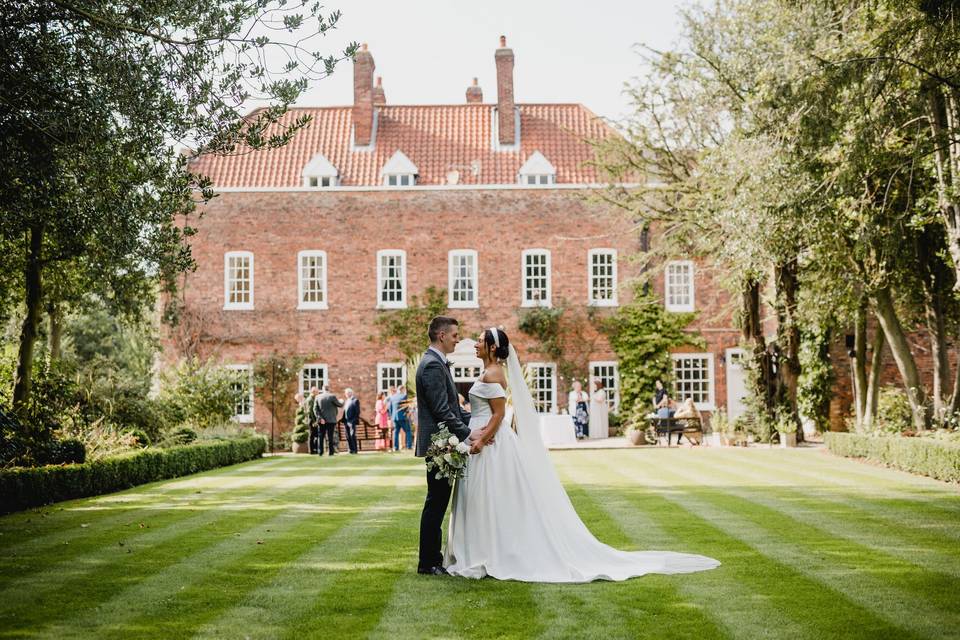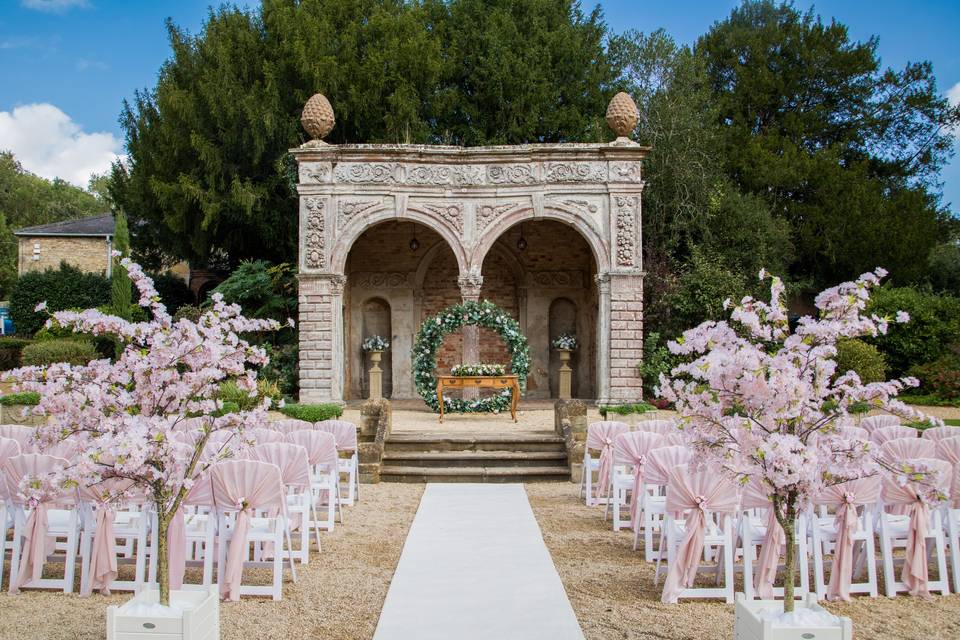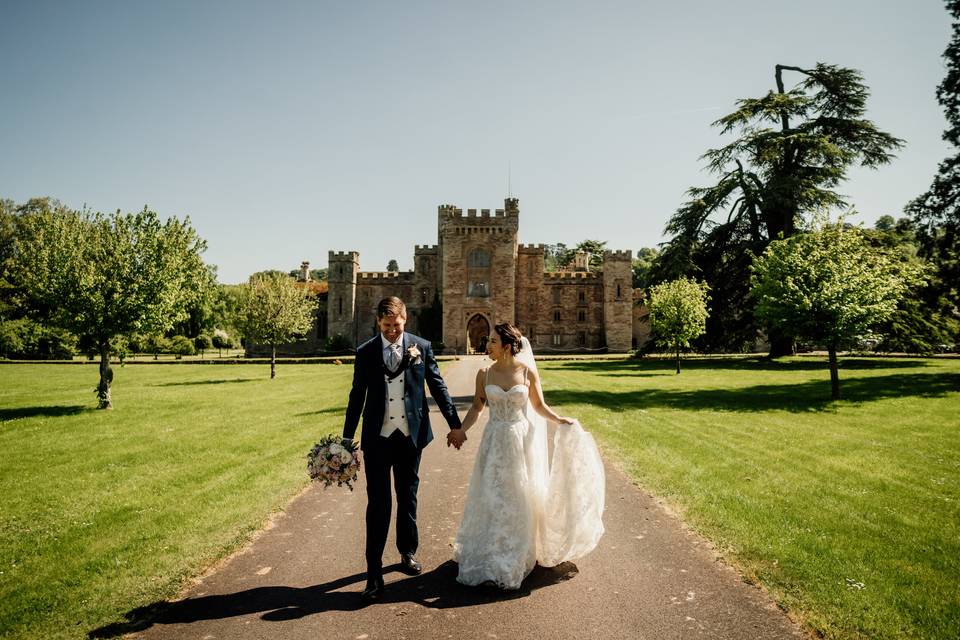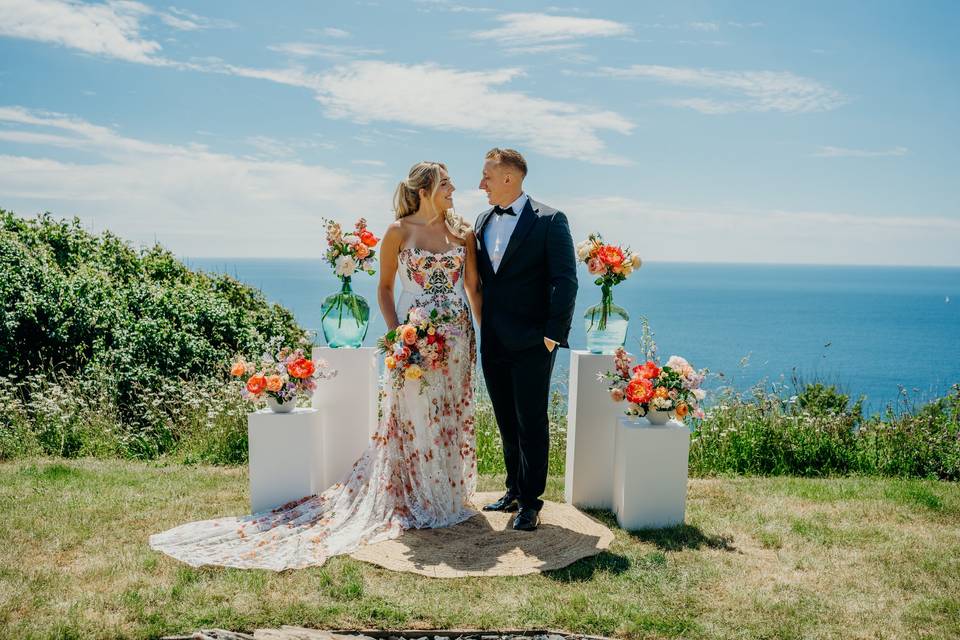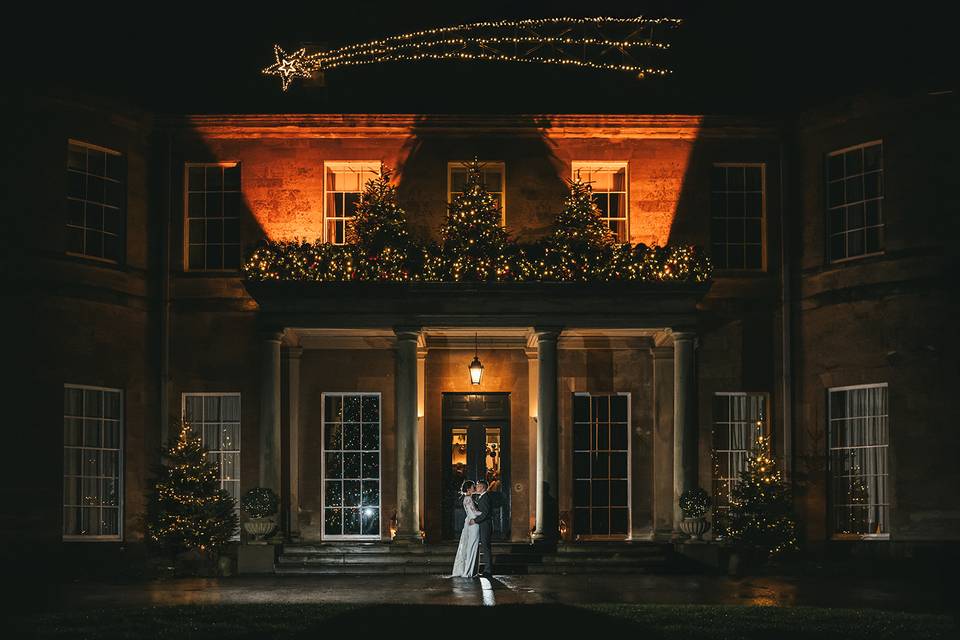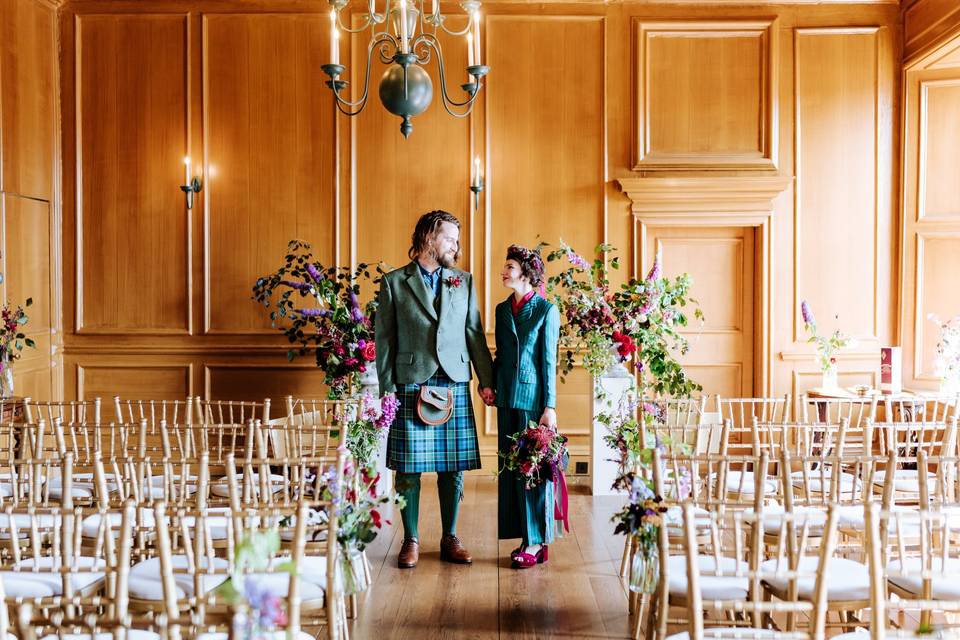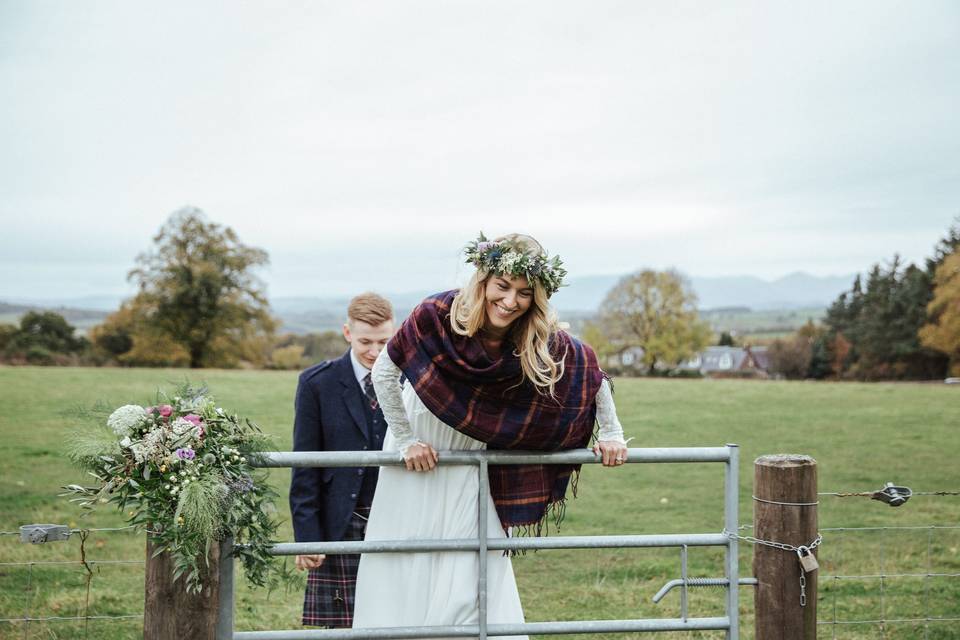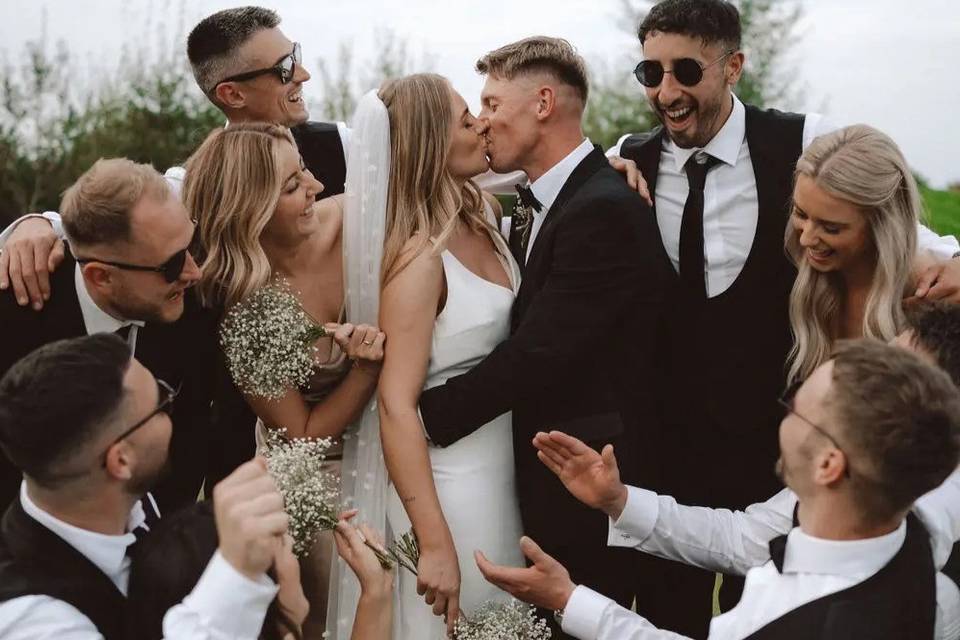What You Need to Know About the Order of a Wedding Processional
Don’t have a clue who walks when at your ceremony? We’ll take you through every step of your big arrival with our essential guide to the order of a wedding processional
We have included third party products to help you navigate and enjoy life’s biggest moments. Purchases made through links on this page may earn us a commission.
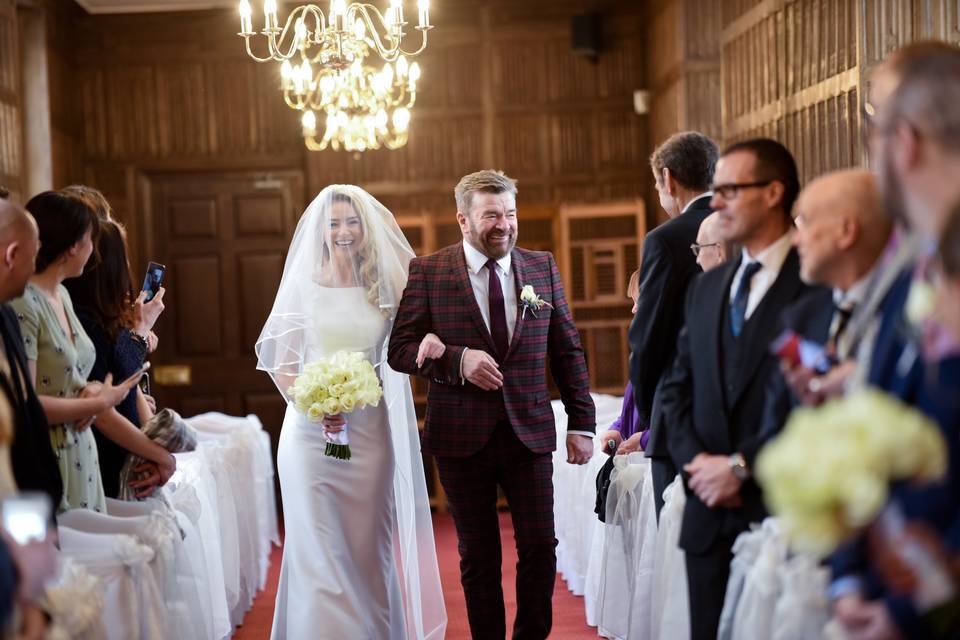
Before your big day arrives, it’s best to get yourself acquainted with your wedding ceremony structure. From the order of the wedding processional and knowing who’ll sit where, to the closing remarks and the recessional, you’ll need to be familiar with it all. But for now, let’s focus on the first part – your grand entrance. You’ll want to kick things off on the right foot, after all.
It’s worth noting that while we’ve covered what happens in a traditional wedding processional order here. If you don’t want to follow the traditional order you definitely don’t have to – particularly if you’re planning a non-religious or alternative ceremony. For example, you might choose to walk down the aisle alone, with both your parents instead of just one, or with your own child or children.
You could even skip the wedding processional altogether and everyone could arrive via side entrances. The world really is your oyster so don’t be afraid to do something different on your day.
Everything You Need to Know About the Wedding Processional
Here's everything you need to know before you take your moment in the spotlight.
When Does the Wedding Processional Happen?
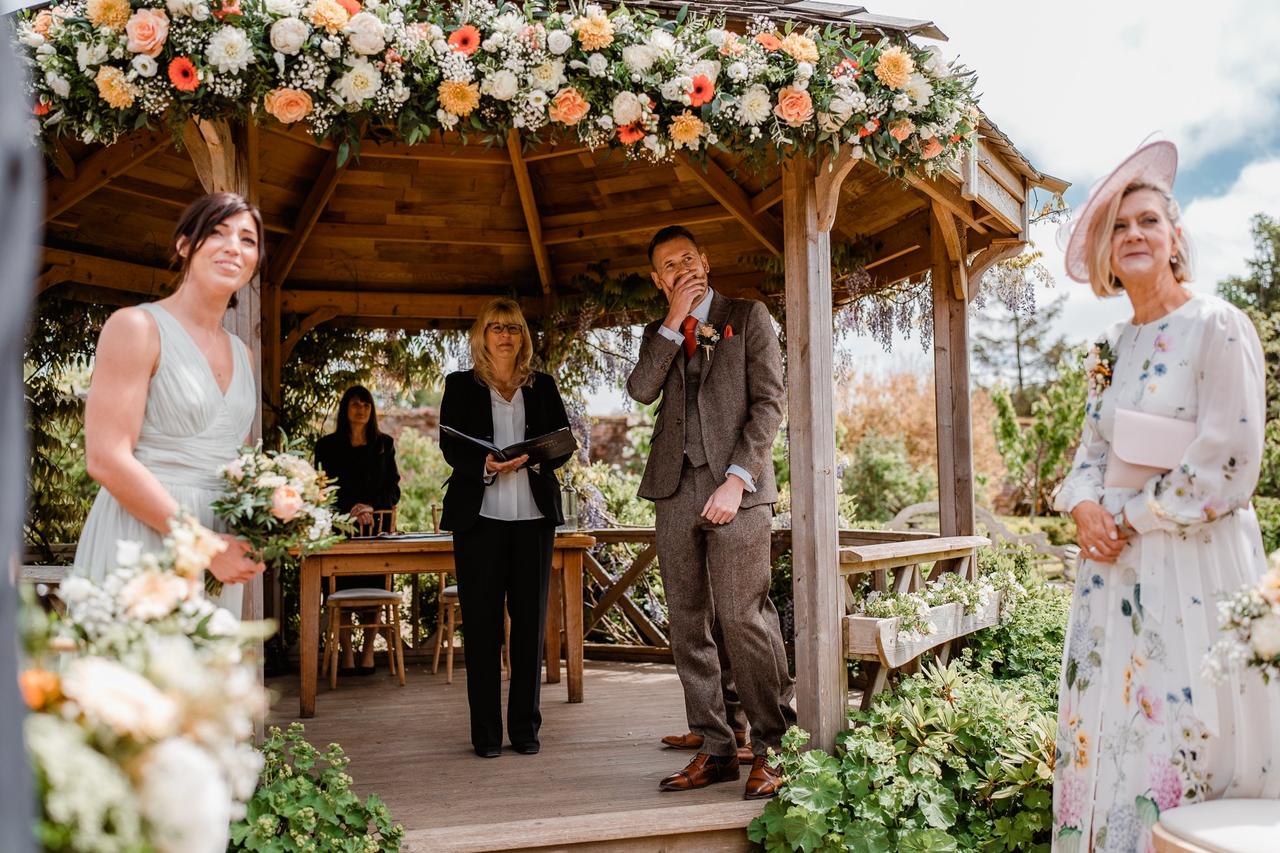
Consider the wedding processional as the start of your celebrations. Once your guests have been seated, your officiant will find their place at the altar and your partner (usually accompanied by their best man or woman) will make their entrance – usually from the side. The music will then begin to play, and this signifies the beginning of your processional.
Who Will Be in the Wedding Processional?
The first thing you need to do is figure out who will be part of your wedding processional. This all depends on who you have invited to be in your wedding party – so it could be one person, or it could be 20 people! Traditionally, a processional would include both of your immediate families, any bridesmaids and/or groomsmen, flower girls and/or page boys, and – of course – yourself and whoever is walking you down the aisle.
What is the Traditional Order of a Wedding Processional?
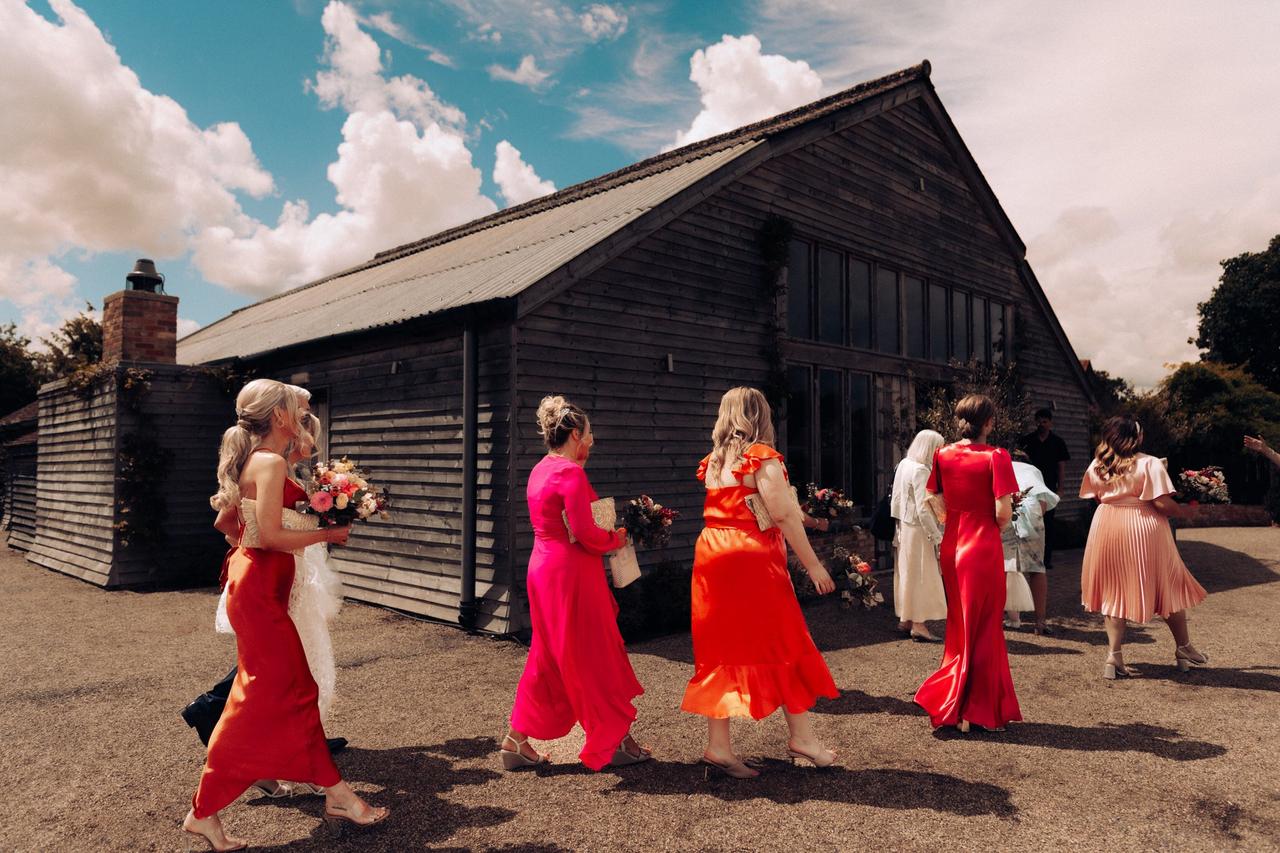
Wondering who walks down the aisle first? The order in which you and your attendants step down the aisle is completely your choice, but after your partner has made their way to the altar, traditionally it is your immediate families who will walk down the aisle first to take their seats (a bride’s family is usually seated on the left and the groom’s on the right).
For Christian weddings, the traditional order of walking down the aisle is as follows:
The groom’s grandparents, the bride’s grandparents, and then the groom’s parents. They can choose to fly solo, walk arm in arm or be ushered down by friends or members of your extended family – the choice is yours.
Once they’re seated, it’s the mother of the bride who comes next (sometimes arm in arm with the father of the groom). If your officiant isn’t already at the altar, they will be the next person to walk down the aisle.
Then you can choose whether you’d like the rest of your wedding party – your bridesmaids, groomsmen, flower girls and page boys – to walk behind you or in front of you, in pairs or separately.
Traditionally, at UK church weddings, the wedding party would walk behind the bride, with the youngest member directly behind. However, it’s becoming increasingly common for the bridesmaids and groomsmen to go first (often in pairs), then the maid of honour, flower girls and page boys, followed by the bride and her father (or whoever else may be escorting you down the aisle).
Note that this typical order will vary from religion to religion. For example, for Jewish weddings, the order is: the rabbi (and/or cantor), the bride’s grandparents, the groom’s grandparents, the best man, and the groom – who is accompanied by both his parents.
At traditional Jewish ceremonies the bride also walks down the aisle with both her parents (her father on the left and her mother on the right) – and all four will stand under the chuppah during the ceremony.
How Does a Wedding Processional Go?
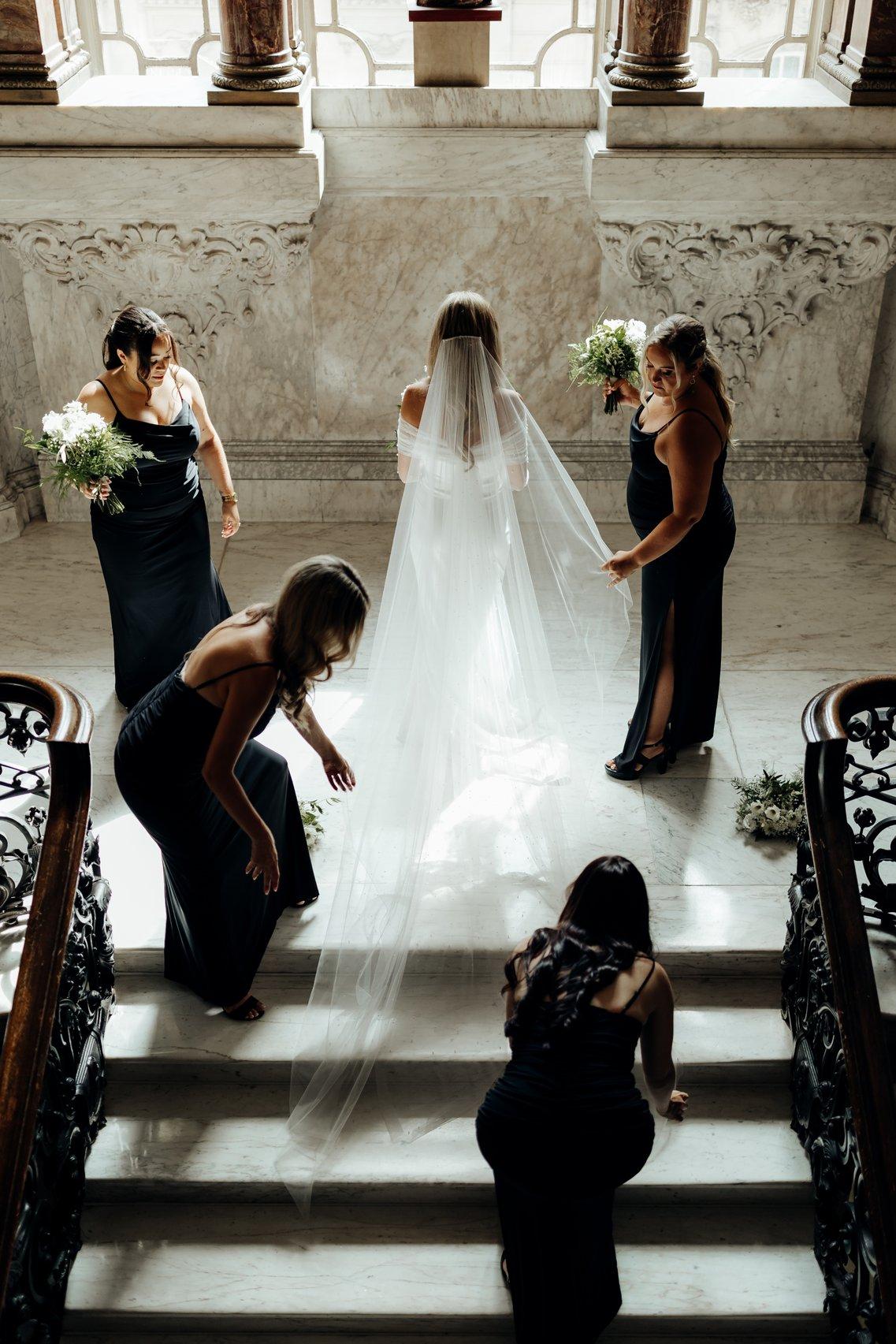
Once you’ve worked out the order of your wedding procession, it’s good to know what will happen next. Typically, you would take the right arm of whoever is walking you down the aisle, with your bouquet in your left. Once you’ve reached your partner at the altar, your father or usher will move to your left side.
The groomsmen may sometimes walk the bridesmaids to the front row, walk around the side then sit themselves at the back – this puts them in a good position to open the doors for you and your partner at the end of the service if there is no one else around to do it.
Typically, your maid of honour or chief bridesmaid will be seated near the front, so you can hand her your bouquet when you reach the altar. She can then hand it back to you once you’ve signed the register. If you’ve decided to have no attendants, your father could take the bouquet and either place it on the front pew or hand it to your mother.
How Long Does a Wedding Processional Take?
So, just how long is a wedding ceremony processional? Typically, the act of everyone walking down the aisle will last around three or four minutes but could be longer or shorter depending on how many people you have in your wedding party. Your moment in the spotlight could take up to a minute of that time if you wanted.
How Long Should Your Wedding Processional Song Be?

Try to keep your wedding processional music to around 3-5 minutes to ensure it lasts the duration of getting everyone seated. It may be that you only need a snippet of that, depending on how many people you have walking down the aisle before or after you.
If you reach the altar before the music finishes, you can have someone fade out the song. If it’s live, the band or singer should know how to adjust.
If you’re still unsure, speak to your venue's wedding planner about how long it generally takes couples to walk the length of the aisle. Or, if you’re planning a rehearsal, do a timed run.
Don’t forget, too, that the hymns and songs you choose will shape your wedding ceremony. As well as your wedding processional song, your wedding music should include a prelude (background music while the guests are being seated); an optional interlude (sometimes a vocal performance or song played during the ceremony); a recessional (played as the newlyweds walk back up the aisle) and a postlude (ambient music that plays until every guest has left the ceremony area).
Looking for songs for bridesmaids to walk down the aisle to? Traditional music for your arrival might include classic choices such as Bridal Chorus (Wagner) Canon in D (Pachelbel) and Wedding March (Mozart), while more modern wedding processional songs include options such as At Last (Etta James), Here Comes the Sun (The Beatles) and You Are The Best Thing (Sophie Faith).
Want more music inspiration? We reveal the most popular wedding songs and artists right now.

